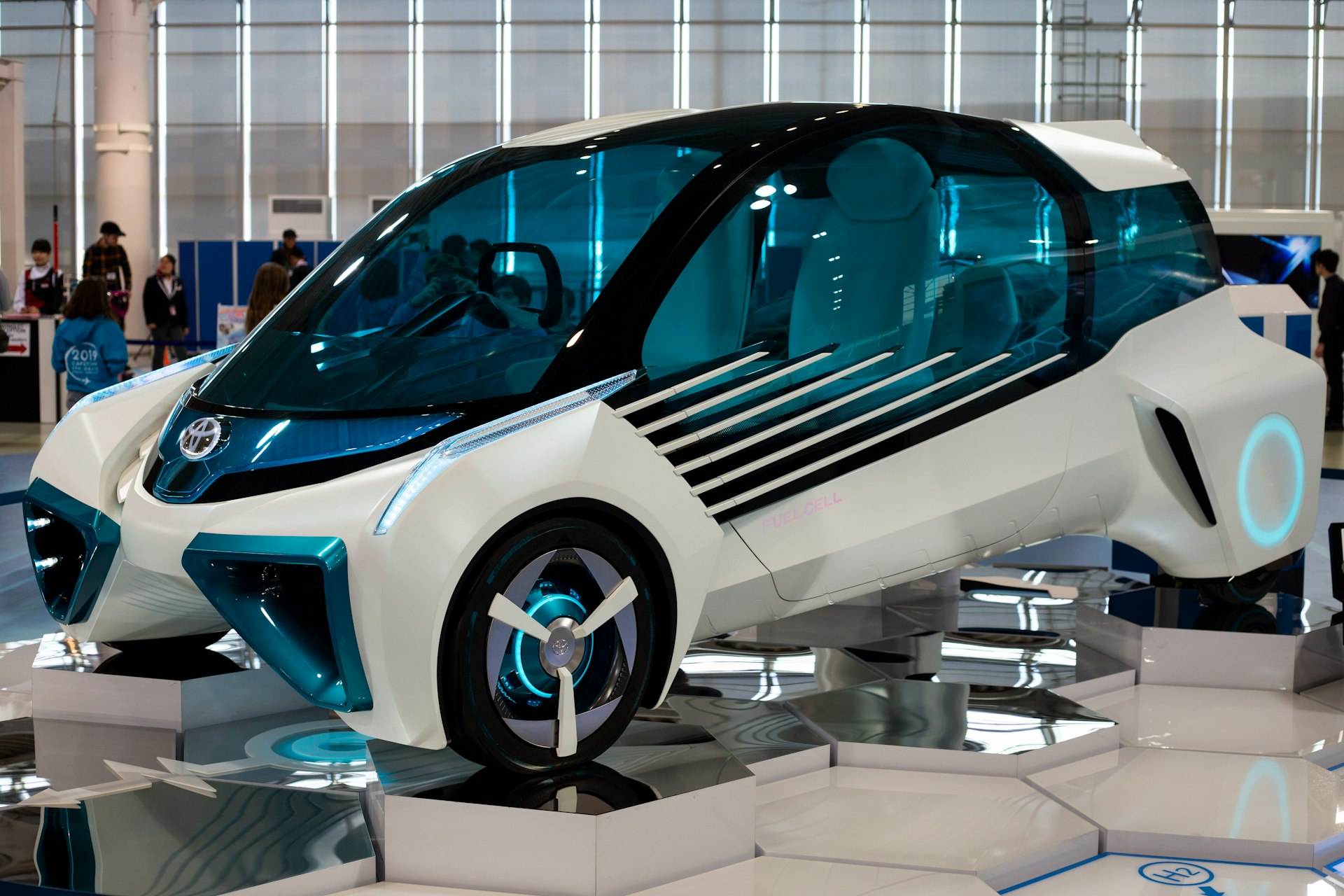Affordable Long-Range EVs: Your Guide to Smart Commuting in 2025

Photo by 陈 å¥æ–Œ on Unsplash
Why Long-Range, Affordable EVs Are Ideal for Daily Commuters
Long-range electric vehicles (EVs) have rapidly evolved, offering daily commuters reliable alternatives to gasoline cars. The latest 2025 models now regularly provide over 300 miles of real-world driving range on a single charge, minimizing the need for frequent recharging. This reliability, combined with lower running costs and growing government incentives, makes them increasingly accessible to budget-conscious drivers looking to cut fuel expenses and reduce their environmental footprint [1] .
Top Affordable Long-Range EVs for 2025
For commuters who prioritize value and distance, several EVs stand out in 2025 for balancing price, range, and practicality. Here are some of the most notable models currently available or expected this year:

Photo by Josh Hild on Unsplash
- Chevrolet Equinox EV (FWD) : Offers an EPA-estimated 319-mile range. The MSRP is $41,100, but qualifying for the federal EV tax credit may reduce the cost to approximately $33,600 [1] .
- Tesla Model 3 Long Range RWD : Delivers a 363-mile range for daily drivers. After applying the federal tax credit, the starting price drops from $42,490 to $34,990, making it competitive in both cost and features [1] , [3] .
- Nissan Ariya Venture+ FWD : Boasts a 304-mile range and a base price of $41,190, offering a spacious and well-equipped option for commuters [1] .
- Hyundai Ioniq 6 SE RWD : Delivers a 300-mile range and starts at $42,700, blending efficiency with modern design [1] , [3] .
- Kia EV6 Light Long Range RWD : Features a 310-mile range. While its starting price is $45,950, it remains an attractive option for those seeking technology and comfort [1] , [2] .
Some models, such as the Ford Mustang Mach-E Premium, also break the 300-mile threshold at a base price of $39,995. For used EV shoppers, a pre-owned Tesla Model 3 with over 300 miles of range can often be found for around $25,000, providing an affordable entry point for budget-focused commuters [1] .
Understanding Federal and State Incentives
Reducing the upfront cost is crucial for many buyers. In the United States, the federal EV tax credit can lower the price of many new electric vehicles by up to $7,500, subject to eligibility and manufacturer qualification. State-level incentives or rebates may further reduce costs, depending on where you live. To take advantage of these savings:
- Check your eligibility for the federal EV tax credit by reviewing the latest IRS guidelines and qualified vehicle lists. Visit the official IRS website and search for “Clean Vehicle Credit.”
- Research your state’s electric vehicle incentives by visiting your state energy department or transportation agency website. Look for programs labeled as EV rebates, tax credits, or utility incentives.
- When purchasing, ask your dealer to provide documentation on all incentives and ensure they apply them to your quote.
- Keep all purchase and registration documents for your tax records and consult a tax professional if needed.
Some automakers also offer direct rebates, special financing, or lease deals on select EV models. Always inquire about current offers before making a final decision.
How to Compare and Select the Right EV for Your Commute
Choosing the best EV depends on your daily mileage, charging access, budget, and feature preferences. Here’s a step-by-step guide to making an informed decision:
- Calculate your average daily distance . If your round-trip is under 50 miles, nearly all EVs will suffice, but a 300+ mile range allows for less frequent charging and more flexibility for unplanned trips.
- Assess your charging options . If you can install a home Level 2 charger, overnight charging is most convenient. For apartment dwellers, check for workplace or public charging stations nearby. Many utility companies provide rebates for home charger installation-check your local provider’s website for EV programs.
- Compare models by range, price, and features . Use automotive research portals like Edmunds and Car and Driver, which provide up-to-date rankings, reviews, and real-world range tests [3] , [4] .
- Test drive your top choices . Experience acceleration, comfort, and visibility before purchasing. Many dealers and some automakers offer extended test drives or EV events.
- Factor in total cost of ownership . Consider not only purchase price but also fuel savings, maintenance costs, and any applicable incentives.
Real-World Example: Commuter Savings and Convenience
Consider a daily commuter who drives 30 miles each way. With an EV averaging 4 miles per kWh and current residential electricity rates, the daily charging cost could be less than $3. Compared to gasoline, this represents substantial monthly savings [3] . Over time, lower maintenance (no oil changes, fewer moving parts) further reduces expenses.
Many EV owners report that charging overnight at home means they rarely visit public stations, eliminating wait times and making daily commuting seamless. For those needing to travel longer distances occasionally, the growing network of ultra-fast chargers, such as those provided by Electra and other networks, makes road trips increasingly practical [2] .
Potential Challenges and Smart Solutions
While most concerns about range and charging have been addressed, some challenges remain:
- Range Variability : Real-world range can decrease in cold weather or at high speeds. Plan for a buffer and research how your chosen model performs in different climates.
- Charging Infrastructure : Urban and suburban areas now enjoy robust charging networks, but rural regions may have fewer options. Use EV trip planning apps and consult public charging maps before longer journeys.
- Upfront Cost : Even after incentives, some EVs carry a higher sticker price than gasoline counterparts. Consider certified pre-owned options or manufacturer lease programs as cost-saving alternatives.
To address these, always factor in your personal driving patterns and charging access. Seek out local EV communities or forums for real-life feedback and tips.
Alternative Approaches for Budget-Conscious Buyers
If new long-range EVs remain out of budget, consider these alternatives:
- Used EVs : Pre-owned Tesla Model 3s and other long-range models are increasingly available for $25,000 or less. Search certified pre-owned programs from major automakers or check with trusted used EV specialists.
- Leasing : Leasing a new EV can lower monthly payments and reduce concerns about battery longevity. Automakers often offer promotional lease rates for new models.
- Shorter-Range Models : If your daily commute is modest, an EV with a 150-200 mile range may be more affordable and still meet all your needs. The 2025 Nissan Leaf, Hyundai Kona Electric, and similar models provide practical options [4] .
Getting Started: Steps to Switch to a Long-Range EV
- Research models using reliable automotive review sites for the latest range and pricing data.
- Calculate your total cost, factoring in tax credits and potential state rebates. Consult your tax advisor for eligibility details.
- Visit multiple dealerships to compare pricing, test drive vehicles, and ask about available incentives.
- If considering a used EV, request battery health reports and vehicle history from reputable sellers.
- Plan your home charging setup by contacting your local utility about rebates or preferred contractors.
- Connect with local EV owner groups for practical advice and support as you transition.
Key Takeaways for Daily Commuters
Affordable long-range EVs are now within reach for many daily commuters. With careful research, attention to incentives, and a clear understanding of your driving needs, you can enjoy all the benefits of electric driving without compromising on convenience or cost. By following the steps and guidance above, you will be positioned to make a smart, sustainable choice that meets your budget and lifestyle.
References
MORE FROM ismath.net













